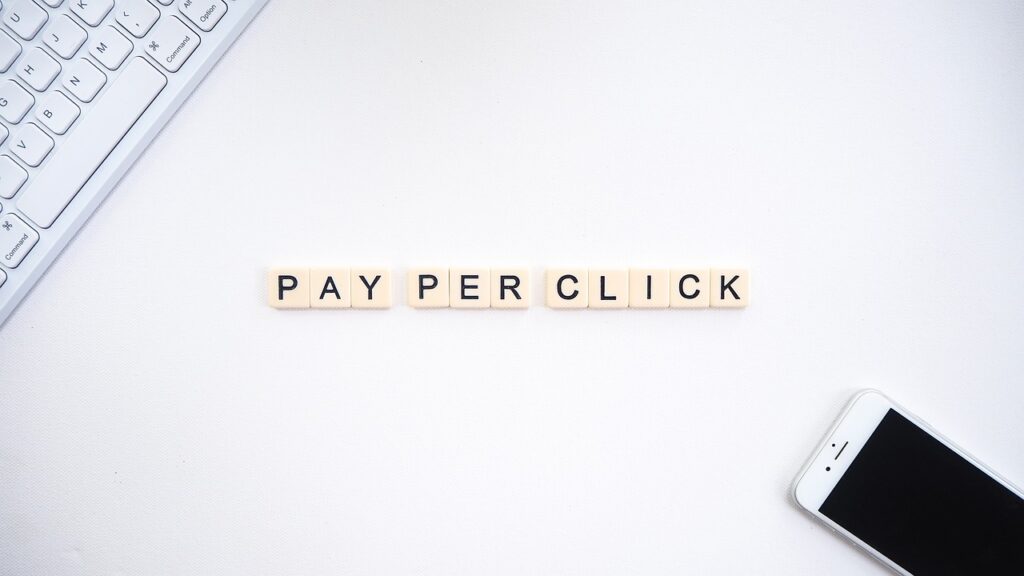
In today’s fast-paced digital marketing landscape, Pay Per Click (PPC) advertising provides a powerful means of directing targeted website traffic. For both experienced practitioners and novices exploring online promotional options, a strong comprehension of PPC can considerably elevate business visibility and income. This document aims to outline the key elements of PPC, from its underlying principles to optimization strategies for maximizing return on investment.
What Is Pay Per Click Advertising?
Pay Per Click (PPC) advertising is a digital marketing model where advertisers pay each time their ad is clicked. PPC allows advertisers to essentially buy visits to their site rather than attempt to earn them organically. PPC ads can appear on search engines like Google as well as social media and other websites that feature ads.
The most common Pay Per Click is search engine ads, letting advertisers bid for placement in sponsored links when a search on business-related keywords occurs. For example, bidding on “PPC management” could place an ad at the top of Google results for that keyword search.
How Pay Per Click Campaigns Work
Understanding how Pay Per Click campaigns work is crucial to leveraging their full potential. Here’s a simplified breakdown:
- Keyword Research and Selection: The foundation of any successful paid search campaign is selecting the appropriate keywords. Keywords are the search terms that users enter into search engines. The goal is to choose keywords relevant to one’s business that have high search volumes yet limited competition.
- Ad Creation: Once keywords are identified, ads are developed to appear within search results or other platforms. Ads should be compelling with a clear call to action.
- Bidding and Budgeting: Paid search uses an auction-based system where the amount willing to pay per click on an ad, known as cost per click (CPC), is determined. Daily or monthly budgets also establish spending controls.
- Ad Placement and Monitoring: With the campaign configured, ads begin appearing in search results or other locations. Regular monitoring allows for tracking performance and implementing adjustments as needed.
- Performance Analysis: Analytical tools measure campaign success through key performance indicators such as click-through rate, conversion rate, and return on investment.
Setting Up Your First PPC Campaign
Setting up your first pay per click campaign might seem daunting, but by following these steps, you can get started on the right foot:
- Define Objectives: Determine what goals the PPC campaign aims to achieve such as increasing website visits, generating leads, or boosting sales.
- Select the Platform: Choose where ads will be placed. Google Ads is a popular option but social media networks like Facebook and LinkedIn also offer robust paid advertising solutions.
- Conduct Keyword Research: Leverage tools like Google Keyword Planner, SEMrush, or Ahrefs to uncover relevant keywords. Pursue a mix of short-tail and long-tail keywords to reach a broad audience while targeting specific niches.
- Create Advertisements: Develop compelling ad copy that incorporates target keywords. Ensure ads are pertinent to the keywords and provide value to the user.
- Establish Budget and Bids: Determine the budget willing to be allocated daily and set bids for each keyword. Initiate with a modest budget and adjust as performance dictates.
- Launch Campaign: Once configuration is complete, activate the campaign and begin driving traffic to the website.
Optimizing Your PPC Ads for Maximum ROI
To get the most out of your PPC campaigns, continuous optimization is key. Here are some tips for maximizing your ROI:
- Monitor Performance Regularly: Keep a close eye on your campaign’s performance. Use tools like Google Analytics and Google Ads to track key metrics.
- A/B Testing: Test different versions of your ads to see which ones perform better. This can include changes to the ad copy, images, or CTAs.
- Refine Your Keywords: Regularly review your keyword list. Remove underperforming keywords and add new ones based on search trends and performance data.
- Improve Your Ad Quality Score: Google assigns a Quality Score to your ads based on their relevance and quality. A higher Quality Score can lower your CPC and improve ad placement. Focus on creating high-quality, relevant ads and landing pages.
- Optimize Your Landing Pages: Ensure that the landing page your ad directs users to is relevant, loads quickly, and provides a seamless user experience. A well-optimized landing page can significantly improve your conversion rate.
- Adjust Your Bids: Based on the performance data, adjust your bids to ensure you’re getting the best possible ROI. Increase bids on high-performing keywords and reduce or eliminate bids on keywords that aren’t delivering results.
Conclusion
Pay Per Click advertising is an effective way to drive targeted traffic and meet marketing goals when done properly. Understanding campaign functionality and applying optimization best practices allows maximizing ROI and business growth. This guide provides a solid Pay Per Click foundation whether starting or refining strategies. Monitor results and continuously optimize campaigns for optimal outcomes.

